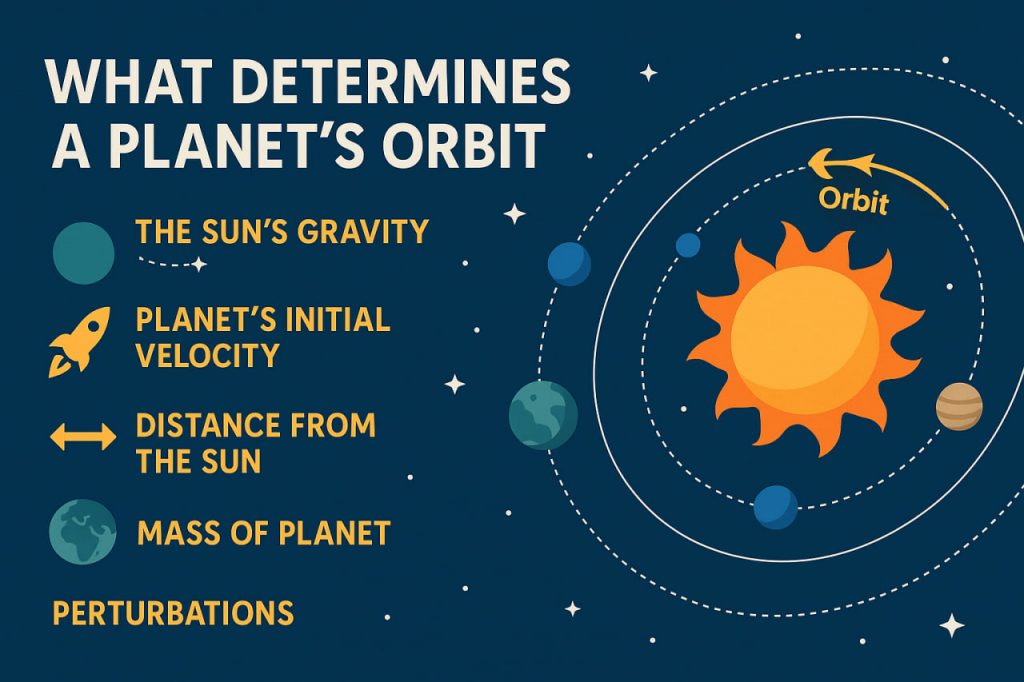An orbit is the curved path a planet follows around a star — in our case, the Sun — due to the force of gravity. All planets in the Solar System orbit the Sun in elliptical paths, though they may appear almost circular. The shape, size, and speed of these orbits depend on several physical forces and conditions that were set during the early formation of the Solar System.
Knowing what determines a planet’s orbit helps scientists understand planetary motion, predict space travel routes, and explore the formation of other star systems.
Key Factors That Affect a Planet’s Orbit
1. The Sun’s Gravity
The dominant force that shapes planetary orbits is the Sun’s gravitational pull. The more massive the Sun, the stronger its attraction, keeping planets locked in orbit. Without this central force, planets would drift away into space.
2. Planet’s Initial Velocity
When a planet forms, it acquires a certain speed and direction. This initial velocity causes it to move forward. The balance between this motion and the Sun’s gravity creates the stable curved path known as an orbit.
3. Distance from the Sun
Planets farther from the Sun feel less gravitational pull and thus move more slowly in wider orbits. Closer planets move faster in tighter paths. This explains why Mercury completes an orbit in 88 days, while Neptune takes about 165 Earth years.
4. Mass of the Planet
While the Sun’s mass primarily controls the orbit, a planet’s own mass can slightly affect its trajectory, especially through interactions with other nearby planets. Larger planets like Jupiter can also alter the orbits of smaller bodies like asteroids or comets.
5. Perturbations and Gravitational Interactions
Planets exert small gravitational pulls on each other. These interactions, called perturbations, can cause slight changes in orbit shape or tilt over long periods. For example, Venus and Jupiter influence Earth’s orbit in small but measurable ways.
6. Orbital Resonance
Sometimes, two planets’ orbits align in a repeating pattern — this is called resonance. It can stabilize their paths or lead to dramatic shifts, especially in moons or asteroid belts.
Why Do Orbits Stay Stable?
Orbits are stable when a planet’s forward motion and the inward pull of gravity are in balance. This is the same principle that keeps satellites and space stations circling Earth. If the balance changes — for example, by a massive collision or nearby object — the orbit can become more elliptical or even unstable.
Over billions of years, solar system orbits may evolve slightly due to these small forces, but overall, planetary orbits remain remarkably consistent.
Glossary
- Orbit – The curved path a planet or object follows around a larger body due to gravity
- Gravity – The force that attracts objects with mass toward one another
- Velocity – The speed and direction of an object’s motion
- Perturbation – A small change in an object’s orbit caused by the gravitational influence of another object
- Orbital Resonance – A repeating gravitational interaction between two orbiting bodies


